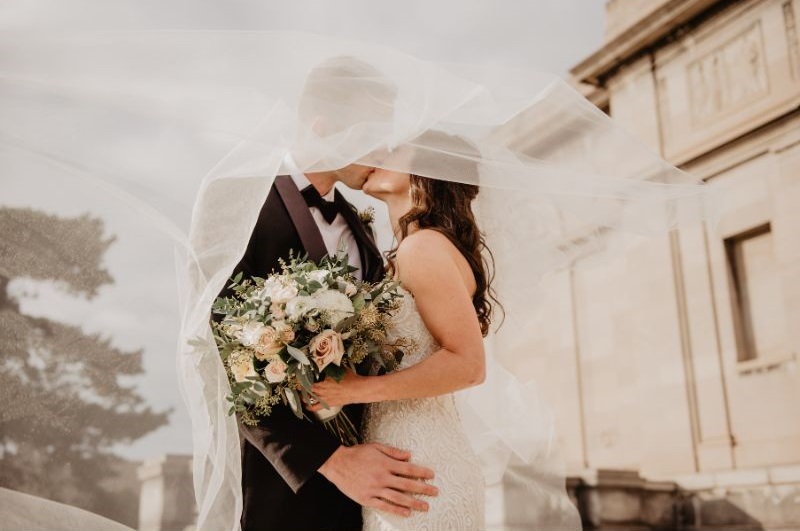Your wedding day is one of the most significant moments of your life, and the photographs captured during this special day will be treasured for generations.
But what truly separates an ordinary snapshot from an extraordinary wedding photo?
Understanding the elements that make a good wedding photo can help you work better with your wedding photographer and ensure your images capture the magic of your celebration. From the technical aspects of lighting and composition to the emotional moments that unfold naturally, exceptional wedding photography is both an art and a science.
Why Lighting and Framing Make or Break Your Wedding Photos
Before diving into emotion and storytelling, let’s talk about the technical fundamentals. Even the most meaningful moment falls flat without proper lighting and composition. These elements form the foundation of every great wedding photo.
Natural Light vs. Artificial Lighting
The best lighting can transform an ordinary moment into something magical. Natural light remains the gold standard in wedding photography, offering soft, flattering illumination that enhances skin tones and creates depth in images. A good photographer knows how to work with the available light at your wedding venue, whether it’s streaming through cathedral windows during the ceremony or the warm glow of golden hour for your couple portraits.
However, wedding photography isn’t just about natural light. Professional photographers come prepared with their camera bag stocked with lighting equipment to handle challenging situations. Reception venues often have dim lighting or unflattering overhead fixtures, and skilled photographers know how to supplement with artificial lighting that looks natural and doesn’t distract from the moment.
Composition and Framing
What distinguishes a snapshot from a work of art often comes down to composition. Strong wedding photos utilize the rule of thirds, leading lines, and thoughtful framing to draw the viewer’s eye to the most important elements. Whether capturing the bride walking down the aisle or the first kiss, a skilled wedding photographer considers foreground and background elements to create images with depth and interest.
The photographer’s job involves constant decision-making about angles, perspective, and framing. Sometimes the most impactful images come from unexpected vantage points—shooting from above to capture the symmetry of group photos, or getting low to emphasize the detail shots of your invitation suite and table settings.
Capturing Authentic Emotion and Key Moments
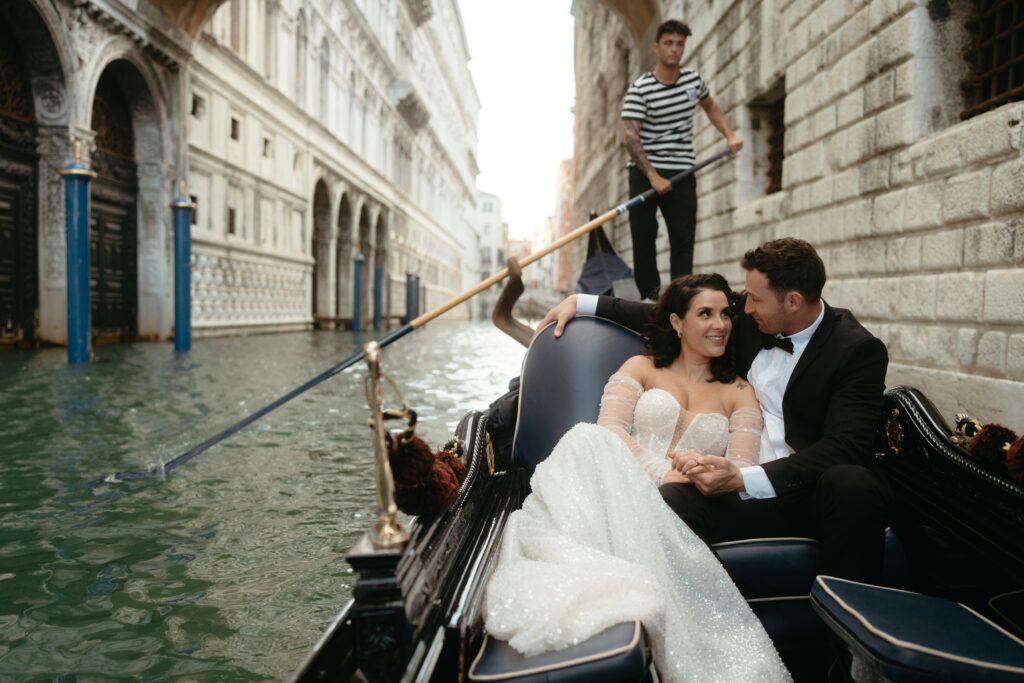
Technical perfection means nothing without genuine feeling. The photographs you’ll treasure most are those that capture real emotion and authentic connection. Here’s how great photographers make that happen.
The Power of Candid Moments
While formal photos and family portraits have their place, the images that couples often treasure most are the unguarded, spontaneous moments. A flower girl’s expression of wonder, the groom’s reaction during the first look, or the tears streaming down a parent’s face during the ceremony—these authentic emotions tell the real story of your wedding day.
Great wedding photographers develop an intuition for anticipating key moments before they happen. They position themselves strategically to capture the married couple’s first kiss, the bride and groom’s reactions to their vows, and the joy that erupts when they’re pronounced married. This anticipatory skill comes from experience shooting hundreds of weddings and understanding the flow of a typical wedding ceremony.
Emotional Connection in Portraits
When it comes to portraits of the bride and groom, technical perfection means nothing without genuine emotion. The best wedding photography tips emphasize the importance of creating a relaxed environment where couples feel comfortable being themselves. This might mean taking a few shots for the couple to settle in, or having them focus on each other rather than the camera.
Research shows that genuine smiles have extraordinary power in creating connection and authentic emotion in photographs. Authentic smiles engage the eyes as much as the mouth, which is why photographers often encourage couples to interact naturally—share a private joke, whisper something sweet, or simply embrace without worrying about the camera. These techniques help avoid the dreaded stiff, forced expressions that plague so many formal wedding photographs.
The Importance of Storytelling Throughout Your Wedding Day
Your wedding is more than individual moments—it’s a complete narrative with a beginning, middle, and end. The best wedding photography weaves all these elements together into a cohesive story.
Documenting the Entire Narrative
A collection of good wedding photos tells the complete story of your whole day, from the nervous excitement of getting ready to the last dance on the dance floor. The best photographers understand that wedding photography is about more than just the ceremony and formal portraits—it’s about capturing the full arc of emotions and events.
This storytelling approach means photographing detail shots that set the scene:
- Wedding rings resting on the invitation suite
- Carefully arranged place cards
- Elegant table settings and floral centerpieces
- The bride’s dress and accessories
- Venue architecture and decor
These images provide context and help you remember all the planning that went into making your day perfect. Later in the reception, photographs of the cocktail hour atmosphere, the first dance, and guests celebrating together complete the visual narrative.
Key Shots That Define Your Wedding Story
Every wedding has certain key shots that form the backbone of your photo collection. An experienced wedding photographer works from a shot list to ensure none of these crucial moments are missed:
- Getting Ready: The bride and groom are preparing, and family members are helping with the final touches
- Ceremony Moments: The bride walking down the aisle, the exchange of vows, the first kiss, the marriage certificate signing
- Family & Groups: All the guests mingling, family photos, bridal party shots
- Reception Highlights: Cocktail hour atmosphere, first dance, cake cutting, dance floor celebrations
- Detail Shots: Wedding rings, invitation suite, table settings, place cards, venue decor
However, rigidly following a shot list without room for spontaneity can result in photographs that feel staged and lifeless. The best approach balances must-have shots with flexibility to capture unexpected, beautiful moments and those fleeting interactions between family members that you might otherwise miss.
Working Effectively with Your Wedding Photographer
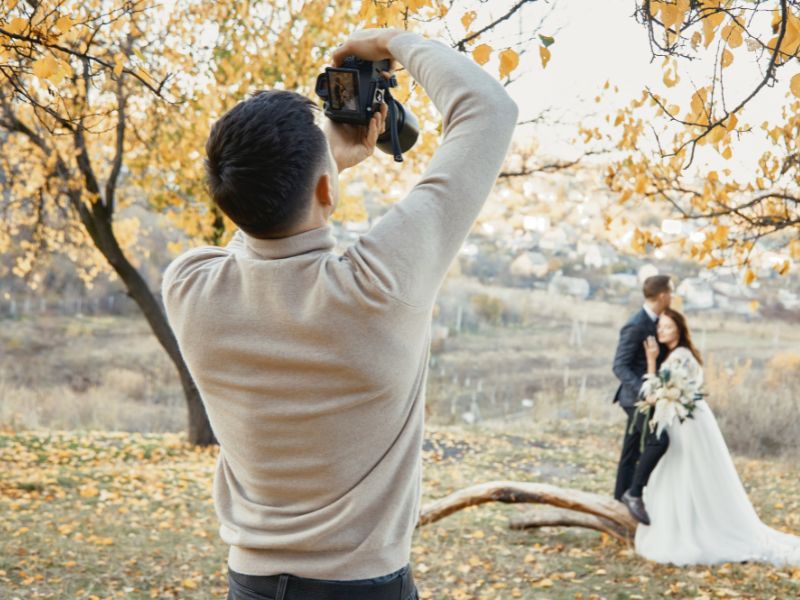
The relationship between you and your photographer directly impacts your final images. Clear communication and proper planning create the foundation for success.
Communication and Planning Create Better Results
One of the most valuable wedding photography tips is to communicate openly with your photographer before your wedding day. Share your vision, discuss your priorities, and be honest about any concerns. If you’re worried about how to avoid a double chin in photos or want to ensure certain family shots happen despite complicated family dynamics, address these topics in advance.
Understanding what to ask a wedding photographer before booking can help ensure you hire someone whose style matches your preferences. Review their portfolio to see how they handle different lighting situations, whether their editing style appeals to you, and if their photographs capture genuine emotion or feel overly posed.
Creating a Wedding Photography Timeline
A well-planned timeline is essential for capturing all the shots you want without feeling rushed. Creating a wedding photography timeline involves coordinating with your photographer to allocate sufficient time for each portion of the day. Most photographers recommend at least 20-30 minutes for couple portraits and 45-60 minutes for all family photos and wedding party shots.
Consider the timing of natural light when planning your photo session. Golden hour wedding photos—taken during the hour before sunset—offer exceptionally flattering light that adds a romantic, ethereal quality to images. Building time into your schedule for these portraits can result in some of your most stunning photographs.
Technical Details That Elevate Wedding Images
While emotion captures hearts, technical excellence ensures your images look professional and polished. These details separate amateur snapshots from professional wedding photography.
Focus, Depth of Field, and Sharpness
A technically excellent wedding photo requires perfect focus on the right elements. Whether capturing the bride’s expression during the ceremony or the details of the engagement ring, the subject should be tack-sharp while the background provides context without distraction. Professional photographers use depth of field strategically, sometimes isolating subjects with a blurred background and other times using a deeper focus to capture more detail in group photos.
Modern camera technology has made achieving sharp focus easier, but it still requires skill and attention. During fast-paced moments like the ceremony or dancing, photographers must quickly adjust settings and focus to capture each moment clearly. The difference between an amateur and a professional often shows in the consistency of sharp, well-focused images throughout the entire wedding day.
More Details in Post-Processing
The photographer’s work doesn’t end when the last guest leaves the dance floor. Post-processing and editing are where good images become great. This includes color correction to ensure accurate skin tones, exposure adjustments to bring out more detail in shadows and highlights, and subtle retouching to address minor distractions without over-editing.
The best wedding photos maintain a natural look while optimizing the technical quality of each image. Over-processing can make photos look artificial, while thoughtful editing enhances the inherent beauty of the moment. A skilled photographer knows when to apply corrections and when to let the natural beauty of the moment speak for itself.
Group Dynamics and Family Photography
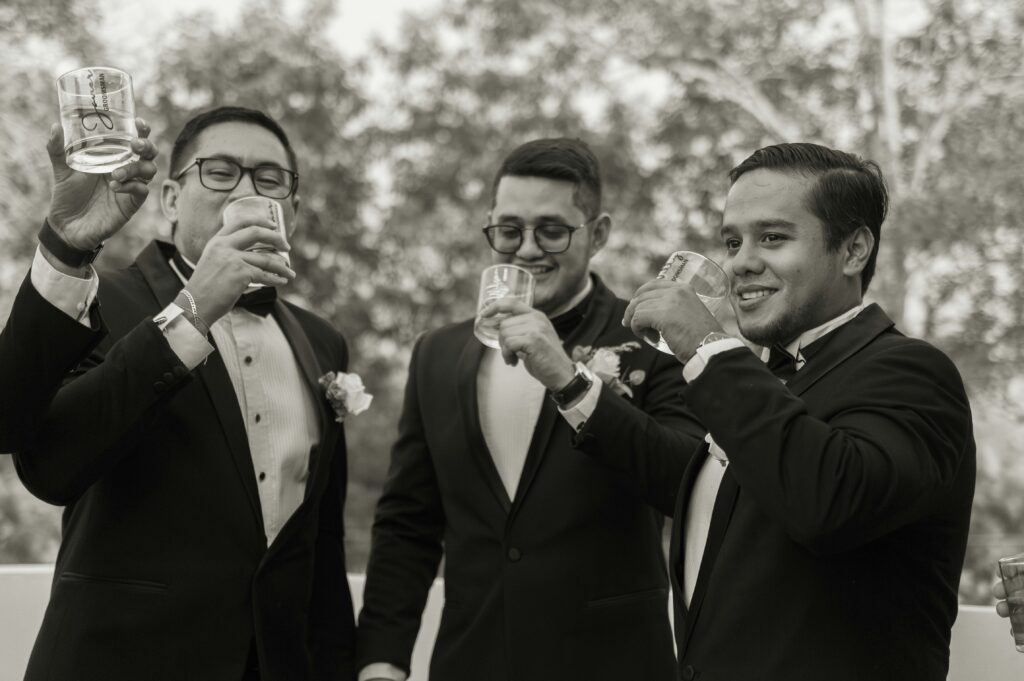
Coordinating multiple people while keeping everyone happy requires both technical skill and people management. Here’s how to make group photos run smoothly and look great.
Managing Family Portraits Efficiently
Family photos and group photos can be one of the most challenging aspects of a wedding day. Coordinating multiple family members, dealing with complicated family dynamics, and keeping everyone happy requires both technical skill and people management abilities. A good photographer comes prepared with a clear plan for family shots, works efficiently to respect everyone’s time, and maintains a positive attitude even when logistics get complicated.
When working with large groups, consider these strategies:
- Assign a family member or wedding party member to help gather people for each photo
- Provide your photographer with a list of desired family groupings before the wedding
- Schedule family photos when guests are already gathered, such as immediately after the ceremony
- Keep individual groupings small to minimize coordination time
- Consider doing a few photos with extended family groups and more intimate shots with immediate family
Wedding Party Photos That Capture Personality
Your bridal party photos should reflect the relationships and personalities of the people who mean most to you. The best shots balance formal group photo compositions with fun photos that showcase your friends’ unique personalities. Some of the most memorable wedding party images come from giving the group simple prompts—walking together, laughing at a joke, or popping champagne—rather than rigid posing.
Engagement photos provide an excellent opportunity to practice working with your photographer and getting comfortable in front of the camera. Many couples find that having done an engagement shoot makes them feel more relaxed during their wedding day photo session, resulting in more natural, confident images.
Location and Environmental Considerations
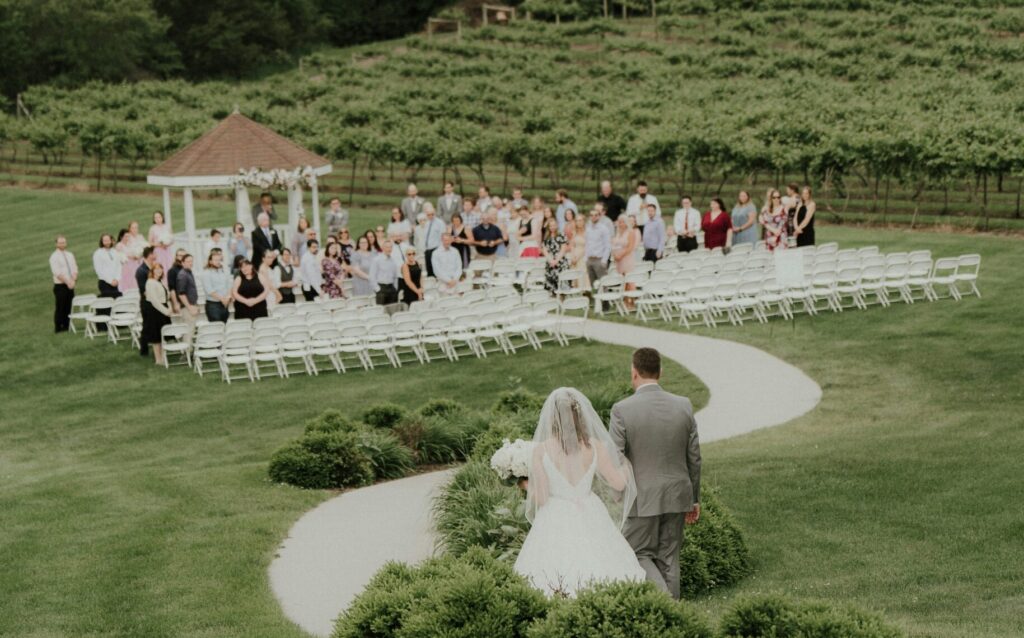
Your venue and environment play a crucial role in how your photographs look. Smart photographers know how to work with any location and weather condition.
Making the Most of Your Wedding Venue
Every wedding venue presents unique opportunities and challenges for photography. Historic buildings might offer dramatic architecture and beautiful natural light, while outdoor venues provide stunning natural backdrops but require planning for weather contingencies. A good photographer scouts the location in advance (or draws on previous experience at the venue) to identify the best spots for portraits and the ideal angles for capturing the ceremony.
The character of your venue should shine through in your photographs. Whether you’re getting married in a rustic barn, an elegant ballroom, or a beachside setting, your images should capture the atmosphere and aesthetic that drew you to that place. Detailed shots of the venue’s unique features help tell the complete story of your wedding day setting.
Adapting to Weather and Lighting Challenges
Even the most carefully planned wedding day can face unexpected weather. Understanding what to do if it rains on your wedding day helps ensure you still get beautiful photographs regardless of conditions. Experienced photographers come prepared with backup plans and the equipment needed to work in various weather conditions.
Challenging lighting situations separate experienced photographers from novices. The best wedding photographers adapt their techniques to whatever conditions arise:
- Harsh Midday Sun: Use reflectors to soften shadows and reposition subjects in open shade
- Dimly Lit Venues: Adjust camera settings and use supplemental lighting that looks natural
- Overcast Days: Take advantage of soft, even lighting for flattering portraits
- Mixed Lighting: Balance multiple light sources for consistent color temperature
Professional photographers view challenges as creative opportunities rather than obstacles, ensuring beautiful images regardless of what Mother Nature brings.
The Human Element: Photographer Skill and Style
Behind every camera is a person whose experience, style, and approach profoundly impact your images. Understanding these human factors helps you choose the right photographer.
Experience Matters in Wedding Photography
Wedding photography is a specialized skill that improves dramatically with experience. Photographers who have shot hundreds of weddings develop an intuitive sense of timing, an ability to anticipate key moments, and the confidence to take charge when necessary while remaining unobtrusive during intimate moments. When choosing a wedding photographer, their experience level is one of the most important considerations.
An experienced photographer knows how to handle the unexpected—a sudden rain shower, a timeline that runs behind schedule, or difficult family dynamics during group shots. They remain calm under pressure, problem-solve quickly, and ensure you get beautiful images regardless of what challenges arise. This experience directly translates to the quality and consistency of your wedding photographs.
Editorial vs. Documentary vs. Fine Art Styles
Understanding different photography styles helps you communicate your preferences and select a photographer whose aesthetic matches your vision:
- Editorial Photography: Emphasizes fashion-forward posing and dramatic compositions, creating magazine-worthy images
- Documentary Photography: Takes a hands-off, photojournalistic approach to capture events as they naturally unfold
- Fine Art Photography: Focuses on creating gallery-worthy images with careful attention to lighting, composition, and artistic elements
Most contemporary wedding photographers blend elements from multiple styles, but they typically lean toward one primary approach.
Preparing Yourself for Great Wedding Photos
Your photographer’s skill matters, but so does your preparation. A little effort before your wedding day ensures you feel confident and look your best in photos.
Looking Your Best Without Looking Overdone
How to look good in wedding photos involves more than just hiring a great makeup artist and photographer. Simple adjustments make a significant difference:
- Posture: Stand tall with your shoulders back for a more confident appearance
- Angles: Turn your body slightly rather than facing the camera straight-on
- Expression: Practice smiling naturally before the big day
- Confidence: Remember that genuine confidence shows in pictures
Many couples benefit from learning basic posing techniques before their wedding day. This doesn’t mean you need to strike specific poses throughout your celebration, but understanding flattering positions for formal portraits helps you feel more confident and results in images you’ll love. Your photographer will guide you, but having some awareness makes the process smoother.
Mental and Emotional Preparation
The best wedding photographs happen when couples are present in the moment rather than worried about the camera. While it’s natural to feel some camera consciousness, trusting your photographer and focusing on the experience helps you relax. The genuine joy, love, and emotion that make the best photographs come through when you’re truly engaged with your partner and the celebration, rather than performing for the camera.
Take a few moments during your wedding day to pause and soak in the experience. These quiet instances—whether it’s a private moment with your new spouse, observing your guests dancing, or simply taking in the whole day—often result in reflective, emotional photographs that capture the deeper meaning of your celebration.
Conclusion
What makes a good wedding photo is ultimately a combination of technical excellence, artistic vision, and authentic emotion. The best wedding photography captures not just how your wedding looked, but how it felt—the anticipation, the joy, the love, and all the meaningful moments in between. Great photographs require skill and preparation from both the photographer and the couple, along with the right balance of planning and spontaneity.
Your wedding photographs will become increasingly precious as years pass, serving as tangible memories of one of life’s most important milestones. By understanding what makes a good wedding photo, you can work effectively with your photographer to ensure your images authentically represent your love story and your special day.
If you’re planning your wedding and want to ensure every moment is captured beautifully, Celeste’s wedding photography services focus on creating timeless, authentic images that tell your unique story. We’d love to discuss your vision and help you create photographs you’ll treasure for a lifetime.
Frequently Asked Questions
What is the most important quality to look for in a wedding photographer?
Look for someone who captures authentic emotion and makes you feel comfortable. When reviewing portfolios, ask yourself: do these photos make you feel something? Also, ensure you have good chemistry—you’ll spend 8+ hours together on your wedding day.
Should I do a first look before the ceremony?
Yes, if you want more time for portraits and prefer joining the cocktail hour immediately after the ceremony. No, if seeing each other at the altar feels more meaningful to you. There’s no wrong choice—it’s about what matters most to you as a couple.
What happens if my photographer misses important moments?
Experienced photographers rarely miss key moments because they position strategically, arrive early, and often use a second shooter. To help ensure nothing is missed, provide your photographer with a timeline and a list of must-have shots before your wedding day.
How important are engagement photos before the wedding?
They’re not required, but highly recommended. Engagement sessions help you get comfortable in front of the camera and build rapport with your photographer. Couples who do engagement photos typically feel more relaxed and natural on their wedding day.
How long does it take to receive wedding photos after the wedding?
Plan on 6-8 weeks for your full gallery of edited images. Many photographers provide a sneak peek of 10-20 photos within a few days for social media sharing while you wait for the complete collection.
Should we create a shot list for our photographer?
Yes, but keep it focused. Create a list of 10-20 must-have shots (specific family groupings, important details, unique moments). This ensures nothing crucial is missed while giving your photographer creative freedom to capture unexpected, beautiful moments.
